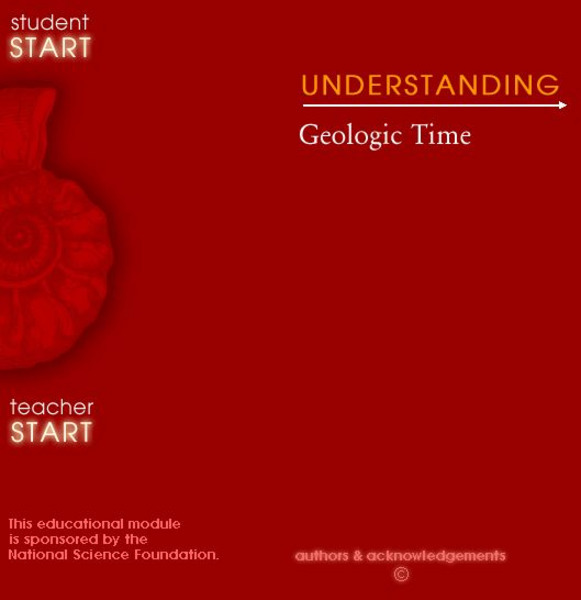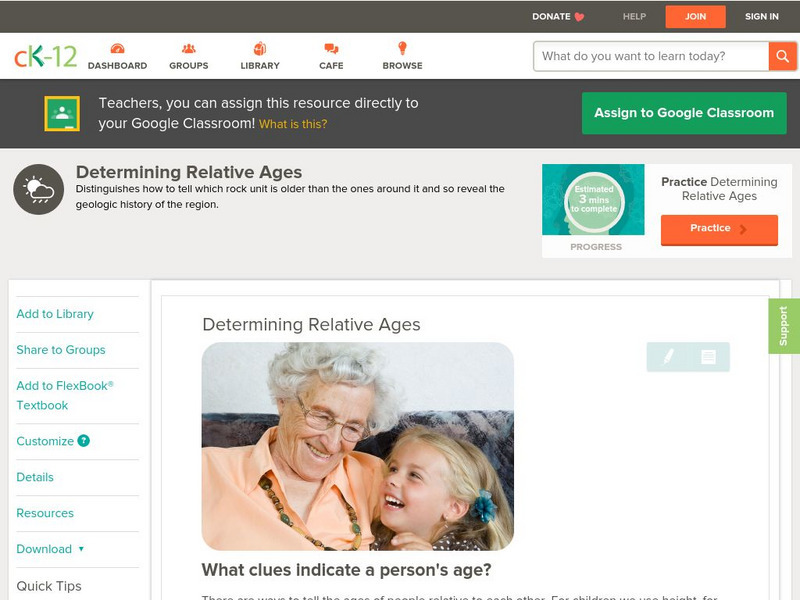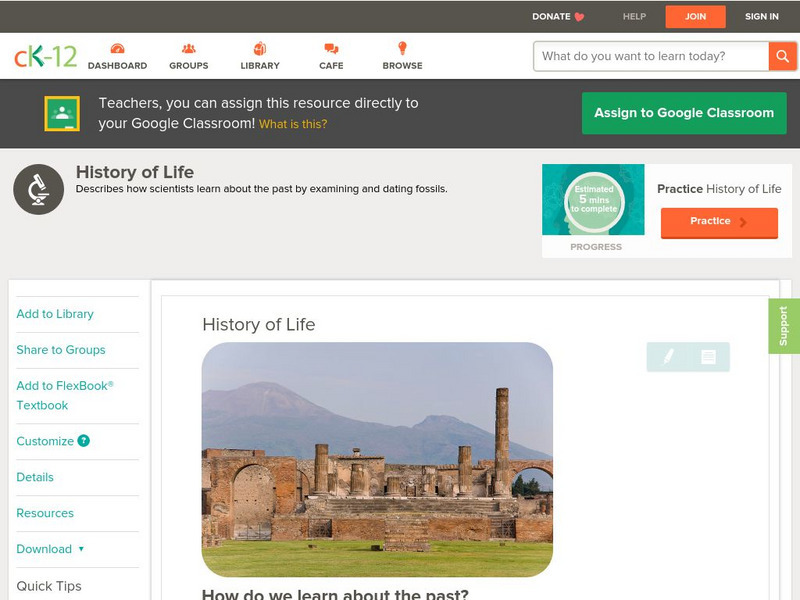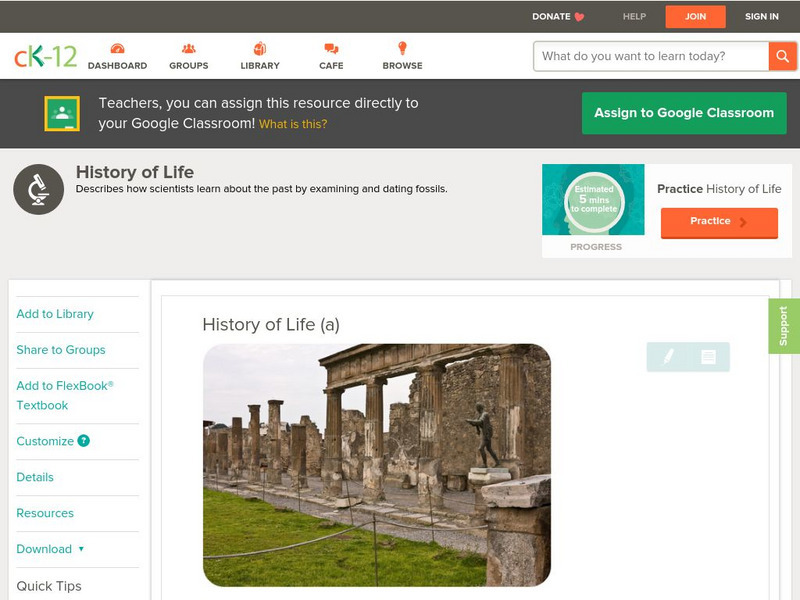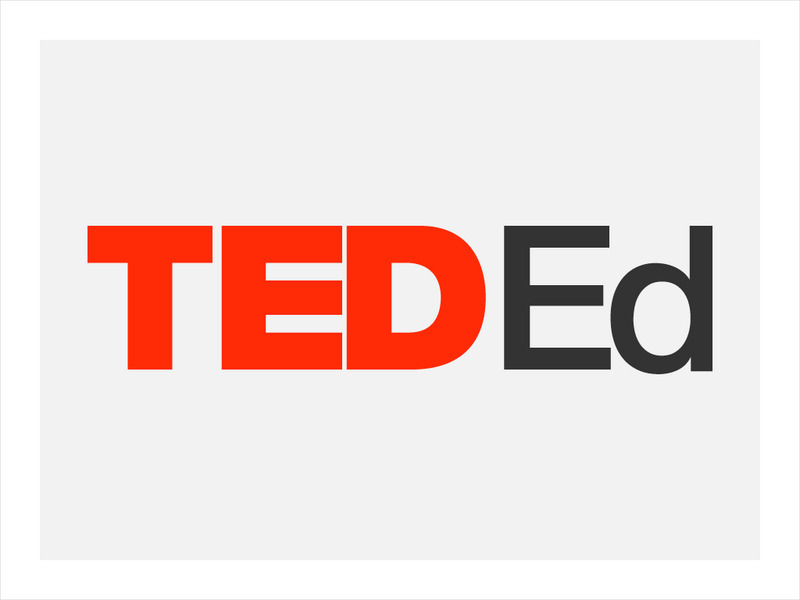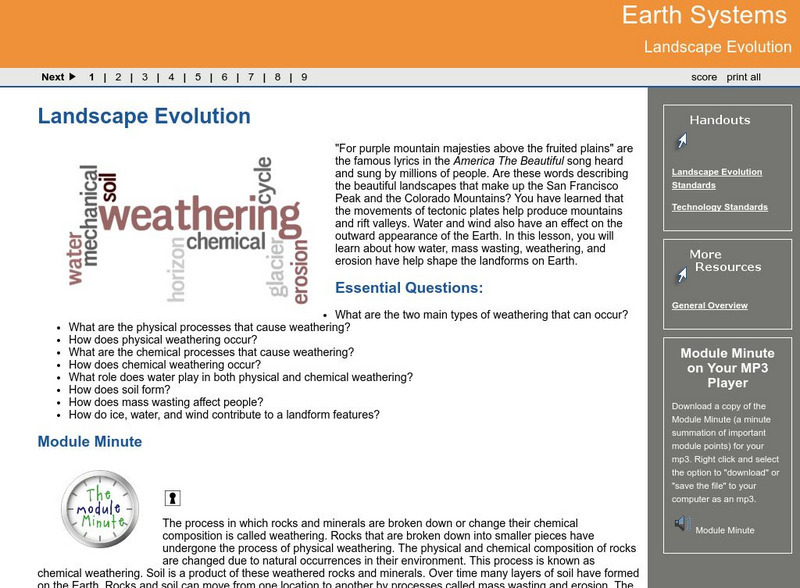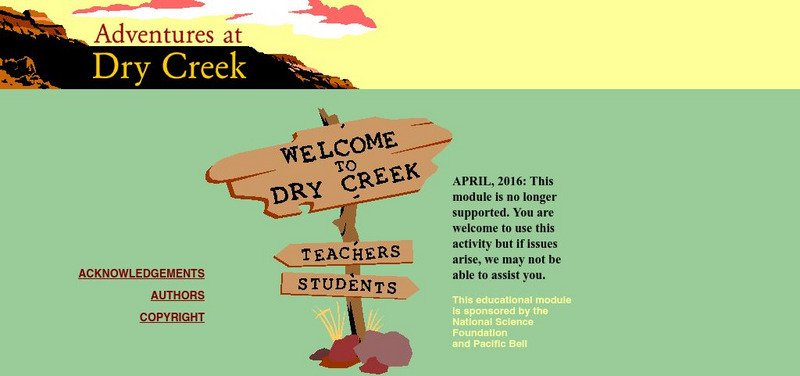Columbus City Schools
The Mystery of Earth’s History
Every living creature can leave a fossil record, yet most fossils belong to extinct organisms rather than ones currently living. Scholars learn about dating rock layers, fossils, and the environment of the past. Pupils understand that...
Columbus City Schools
Geological Effects of Plate Tectonics
Don't get your classes all shook up about plate movement, instead use a thorough unit that guides learners to an understanding of plate tectonics. The lessons incorporate a study of the types of plate boundaries and their effects on the...
Brooklyn Children’s Museum
Volcanoes!
Give young geologists an up close and personal look at volcanoes with a series of hands-on earth science lessons. Whether they are investigating the properties of igneous rocks, building their own volcanoes, or making...
Curated OER
Volcanoes: Second Grade Lesson Plans and Activities
Young geologists explore volcanoes with a series of engaging geology activities. First, they learn the difference between magma and lava before coloring and labeling the parts of a volcano. During the lab, individuals watch a...
Brooklyn Children’s Museum
Rocks and Minerals in Our Lives
Young geologists discover the important role that rocks and minerals play in our everyday lives through this series of hands-on activities. Starting off with a lesson that defines the difference between plants, animals, and...
Columbus City Schools
Diversity of Living Things
Here's a topic classes can really dig—the fossil record. Use the well-organized and thoughtful road map to take eighth graders back in time to unearth the answer. Learn how our climate has changed, and how organisms have...
Curated OER
Exploration and Settlement of the American Southwest
Students scrutinize the Zuni Pueblo Revolt in this seven lessons unit on early Spanish explorers in the American southwest. The discovery of the Spanish missions, the search for the seven cities of gold, and particular geological...
University of California
Ucmp: Understanding Geologic Time
A slideshow for teachers and students exploring Earth's geologic timeline and history. Click the buttons at left to select the teacher or student version.
CK-12 Foundation
Ck 12: Earth Science: Formation of Earth
[Free Registration/Login may be required to access all resource tools.] How the Earth was formed.
Georgia Department of Education
Ga Virtual Learning: Earth and Life History
In this amazingly comprehensive tutorial you will learn about the geological and environmental changes that occurred during the geologic time scale.
Georgia Department of Education
Ga Virtual Learning: Geologic Time and Correlation
In this amazing interactive tutorial you will learn about what methods are used by geologists to learn about the history of the Earth. Investigate a geologic time scale and learn about how scientists have developed and organized a record...
University of California
University of California Museum of Paleontology: Geologic Time
Learn about geologic time, including the age of the Earth by putting it in terms of pages in a book.
CK-12 Foundation
Ck 12: Earth Science: Determining Relative Ages
[Free Registration/Login may be required to access all resource tools.] Distinguishes how to tell which rock unit is older than the ones around it and so reveal the geologic history of the region.
CK-12 Foundation
Ck 12: Biology: History of Life
[Free Registration/Login may be required to access all resource tools.] This comprehensive lesson by CK-12 explains how scientists learn about the past by examining and dating fossils.
CK-12 Foundation
Ck 12: Biology: History of Life
[Free Registration/Login may be required to access all resource tools.] Describes how scientists learn about the past by examining and dating fossils.
CK-12 Foundation
Ck 12: Fourth Grade Science: Earth Science: Relative Ages of Rocks
[Free Registration/Login may be required to access all resource tools.] Looks at how stratigraphy can be used to determine the relative ages of rocks, how unconformities occur, ways to match rock layers in different areas, and how...
University of California
University of California Museum of Paleontology: Stories From the Fossil Record
This colorful, interactive site demonstrates how fossils can be used to discover a range of information about the past. Topics include Past Lives, Paleoecology, Geologic History, and Biodiversity.
CK-12 Foundation
Ck 12: Earth Science: Precambrian Continents
[Free Registration/Login may be required to access all resource tools.] How the first continents were formed.
Smithsonian Institution
Smithsonian Learning Lab: Fossils: Footprints Across Time
Smithsonian Education presents "Fossils: Footprints Across Time." Teachers can download this teaching package that introduces students to the study of fossils. Students will discover what fossils can teach us about the Earth as it was...
TED Talks
Ted: Ted Ed: Four Ways to Understand the Earth's Age
The Earth is 4.6 billion years old- but how can humans relate to a number so colossal, and where do we fit on the geologic timeline? Joshua Sneideman reminds us of our time and place in the universe. [3:45]
Georgia Department of Education
Ga Virtual Learning: Landscape Evolution
In this amazing online tutorial you will learn about how water, mass wasting, weathering, and erosion have help shape the landforms on Earth. The lesson includes many helpful interactive materials to prepare help you understand landscape...
Vision Learning
Visionlearning: Atmosphere and Oceans: The Rise of Atmospheric Oxygen
An explanation of the Earth's atmosphere and how it has evolved over geologic time.
University of California
Ucmp: Adventures at Dry Creek
For this lesson, students embark on an adventure to find out what life was like in Montana 60-70 million years ago. Students "join" a research lab to collect fossils from Montana and analyze them to find direct and indirect evidence of...







